Reviews: Read What Christian Fisanick Is Saying
17 ★★★★★ reviews
12 ★★★★★ reviews
1 ★★★★★ reviews
Binary Bucket List
Overall customer rating: ★★★★★reviewed by Christian Fisanick (confirmed purchase)
Rating: ★★★★★ (Date Added: Monday 06 May, 2024)
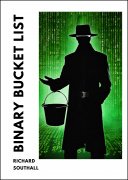 The two techniques used in this three-phase routine are as old as the hills and are well known to mentalists. The routining, however, is original, and I like it a lot. Each phase is handled identically (always a good thing) and the third phase, where the volunteer says absolutely nothing about which of your bucket-list items he chose will blow the minds of laypeople. That phase is a more reliable version of To-Do Voodoo, a Rick Lax effect that I've been using for years to great effect. At $8, if you like tricks using the binary method, this is a steal!
The two techniques used in this three-phase routine are as old as the hills and are well known to mentalists. The routining, however, is original, and I like it a lot. Each phase is handled identically (always a good thing) and the third phase, where the volunteer says absolutely nothing about which of your bucket-list items he chose will blow the minds of laypeople. That phase is a more reliable version of To-Do Voodoo, a Rick Lax effect that I've been using for years to great effect. At $8, if you like tricks using the binary method, this is a steal!
Third Eye Peek
Overall customer rating: ★★★★★reviewed by Christian Fisanick (confirmed purchase)
Rating: ★★★★★ (Date Added: Monday 23 January, 2023)
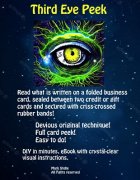 Mark Stone's Spy Cat wallet is a favorite of mine. In the Spy Cat eBook, Mark shows you how to make an incredibly effective peek wallet, or modify an existing peek wallet to improve it, for a small price. Now he's released Third Eye Peek, a business-card peek that uses essentially two gift cards and two rubber bands. And it's excellent, super easy to make and, like the Spy Cat, super deceptive with no dodgy moves. Even if you're lousy with arts and crafts, you'll be able to make this peek device in less than five minutes because Mark holds your hand with clear instructions and color pictures. And when you're done, you'll have a small peek device that you can carry with you everywhere in your wallet.
Mark Stone's Spy Cat wallet is a favorite of mine. In the Spy Cat eBook, Mark shows you how to make an incredibly effective peek wallet, or modify an existing peek wallet to improve it, for a small price. Now he's released Third Eye Peek, a business-card peek that uses essentially two gift cards and two rubber bands. And it's excellent, super easy to make and, like the Spy Cat, super deceptive with no dodgy moves. Even if you're lousy with arts and crafts, you'll be able to make this peek device in less than five minutes because Mark holds your hand with clear instructions and color pictures. And when you're done, you'll have a small peek device that you can carry with you everywhere in your wallet.
There are so many new peek devices on the market, like POV, Room 66, The Peak, Blindz, and Slick, that all cost more. Some are good; some are not. If you're looking to peek a business card without using an expensive peek wallet, it's hard to beat this Mark Stone gem. It's simple, creative, and gets the job done. Highly recommended.
The Sandwich Peek
Overall customer rating: ★★★★★reviewed by Christian Fisanick (confirmed purchase)
Rating: ★★★★★ (Date Added: Wednesday 17 November, 2021)
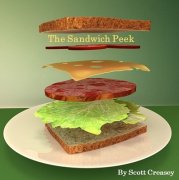 There are a bunch of excellent business card peeks out there. I particularly like Phill Smith's The Biz, which uses only a simple sleight, and Looch's Hollow, Paul Carnazzo's PaC Stack, and Marc Oberon's Insider, which are all variations on a theme with increasingly elaborate gaffes. Leave it to the creative mind of Scott Creasey to come up with a method using an ancient, underused gaffe, one that you can make in about a minute flat with no tools. I watched Scott's performance on the video, and it fooled the heck out of me. I had absolutely no idea how he got the peek. Unlike the heavily gaffed business card decks, you can pretty freely show the deck, both front and back, at the beginning of the routine. "Diabolical" is an overused word used to describe sneaky methods to steal a peek. But this method earns that adjective. Even if you already use one of the fancier peek decks, you should take a look at The Sandwich Peek. It's cheap, slick, and deceptive. And it resets almost instantly. Highly recommended.
There are a bunch of excellent business card peeks out there. I particularly like Phill Smith's The Biz, which uses only a simple sleight, and Looch's Hollow, Paul Carnazzo's PaC Stack, and Marc Oberon's Insider, which are all variations on a theme with increasingly elaborate gaffes. Leave it to the creative mind of Scott Creasey to come up with a method using an ancient, underused gaffe, one that you can make in about a minute flat with no tools. I watched Scott's performance on the video, and it fooled the heck out of me. I had absolutely no idea how he got the peek. Unlike the heavily gaffed business card decks, you can pretty freely show the deck, both front and back, at the beginning of the routine. "Diabolical" is an overused word used to describe sneaky methods to steal a peek. But this method earns that adjective. Even if you already use one of the fancier peek decks, you should take a look at The Sandwich Peek. It's cheap, slick, and deceptive. And it resets almost instantly. Highly recommended.
Pentertain
Overall customer rating: ★★★★★reviewed by Christian Fisanick (confirmed purchase)
Rating: ★★★★★ (Date Added: Wednesday 06 October, 2021)
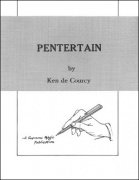 When I saw this series from Ken de Courcy, I didn't know what to think. Books of mathematical tricks using pen and paper? But with the impulse purchase, I found out. Pentertain, the first book in the trilogy, has six tricks: the old "life force," a matrix trick, two entertaining ways to multiple two two-digit numbers, a telephone number trick that has a method that I'd previously seen for currency serial numbers, and a goofy mathematical oddity that Devin Knight put out as a separate manuscript. The second book, Son of Pentertain, has six more things, five of which I don't think are very good and a variation on the old Martin Gardner tic-tac-toe gambit that folks like Richard Osterlind and Johnny Thompson have used. Mistress of Pentertain, the third and longest book, has 25 tricks and gags that are a real mixed bag with a lot of junk. I'd give Pentertain 3/5, Son of Pentertain 2/5, and Mistress of Pentertain 2.5 out of 5. There are things of interest amidst the dross, but be forewarned: de Courcy wrote these books in a different time--almost 50 years ago--so there is a lot of offensive and blue material. If you're going to use some of these things, you're going to have to rework the patter. Otherwise, you'll never pentertain--or entertain--in public again.
When I saw this series from Ken de Courcy, I didn't know what to think. Books of mathematical tricks using pen and paper? But with the impulse purchase, I found out. Pentertain, the first book in the trilogy, has six tricks: the old "life force," a matrix trick, two entertaining ways to multiple two two-digit numbers, a telephone number trick that has a method that I'd previously seen for currency serial numbers, and a goofy mathematical oddity that Devin Knight put out as a separate manuscript. The second book, Son of Pentertain, has six more things, five of which I don't think are very good and a variation on the old Martin Gardner tic-tac-toe gambit that folks like Richard Osterlind and Johnny Thompson have used. Mistress of Pentertain, the third and longest book, has 25 tricks and gags that are a real mixed bag with a lot of junk. I'd give Pentertain 3/5, Son of Pentertain 2/5, and Mistress of Pentertain 2.5 out of 5. There are things of interest amidst the dross, but be forewarned: de Courcy wrote these books in a different time--almost 50 years ago--so there is a lot of offensive and blue material. If you're going to use some of these things, you're going to have to rework the patter. Otherwise, you'll never pentertain--or entertain--in public again.
Out of My Mind
Overall customer rating: ★★★★★reviewed by Christian Fisanick (confirmed purchase)
Rating: ★★★★★ (Date Added: Wednesday 06 October, 2021)
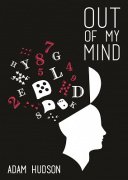 Adam Hudson may not be a well-known mentalism, but he should be. And that glowing quote from Derren Brown isn't just fluffy praise for a colleague: This book is excellent. There are so many different things in here using classic mentalism techniques that you're sure to find something of value, from psychological forces to mathematical tricks, a la Marc Paul. Star Trik, a horoscope revelation, is brilliant, worth the $20 by itself. When you see how Adam rethinks an ancient method, you'll be gobsmacked. No one will ever be able to backtrack the method. It looks impossible, like real mind reading. This is my favorite mentalism book of the year so far.
Adam Hudson may not be a well-known mentalism, but he should be. And that glowing quote from Derren Brown isn't just fluffy praise for a colleague: This book is excellent. There are so many different things in here using classic mentalism techniques that you're sure to find something of value, from psychological forces to mathematical tricks, a la Marc Paul. Star Trik, a horoscope revelation, is brilliant, worth the $20 by itself. When you see how Adam rethinks an ancient method, you'll be gobsmacked. No one will ever be able to backtrack the method. It looks impossible, like real mind reading. This is my favorite mentalism book of the year so far.
The World's Best Psychic Book Tests
Overall customer rating: ★★★★★reviewed by Christian Fisanick (confirmed purchase)
Rating: ★★★★★ (Date Added: Tuesday 04 June, 2019)
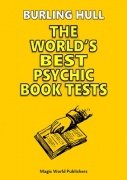 Excellent. Although this is an old book, the methods are superb and timeless. I especially like the ones that combine another classic concept of mentalism to force a page. You will definitely find a test--or two or three--that you will love and use. Who says that you need to spend big $$$ on gaffed books? I having been collecting book tests for a while now and consider myself somewhat of an expert. This is well worth the money. For a pittance, you will like this.
Excellent. Although this is an old book, the methods are superb and timeless. I especially like the ones that combine another classic concept of mentalism to force a page. You will definitely find a test--or two or three--that you will love and use. Who says that you need to spend big $$$ on gaffed books? I having been collecting book tests for a while now and consider myself somewhat of an expert. This is well worth the money. For a pittance, you will like this.
Transcendental Book Test
Overall customer rating: ★★★★★reviewed by Christian Fisanick (confirmed purchase)
Rating: ★★★★★ (Date Added: Tuesday 04 June, 2019)
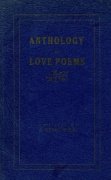 Old, but still exceptionally good, book test. This is worth a few times more than a tenner. Buy it, download it, and you don't even need to print it out in book form. Keep it as a PDF on your phone. (There is nothing unusual about having books on phones any more.) And this is not an app but a regular PDF file with the dirty work built in. It takes about a paragraph to explain the method, which is great and quite deceptive. You will love this and use it in impromptu situations. I know that I will.
Old, but still exceptionally good, book test. This is worth a few times more than a tenner. Buy it, download it, and you don't even need to print it out in book form. Keep it as a PDF on your phone. (There is nothing unusual about having books on phones any more.) And this is not an app but a regular PDF file with the dirty work built in. It takes about a paragraph to explain the method, which is great and quite deceptive. You will love this and use it in impromptu situations. I know that I will.
ESP
Overall customer rating: ★★★★★reviewed by Christian Fisanick (confirmed purchase)
Rating: ★★★★★ (Date Added: Tuesday 17 April, 2018)
 Interesting idea, kludgy construction. Here's a 15-minute video on the construction of a gimmicked note pad to reveal a prediction. The concept, I believe, goes back to the classic El Numero by Syd Bergson, but the construction is different. (Richard Osterlind demonstrates El Numero on one of his videos. I forget which one. That effect has long been out of production, but it is simple to make.) And I think that the construction here, while workable, is not ideal. You have to worry about distance and lighting. It's not a bad gimmick, but even in its creator's hands, it isn't the smoothest thing in the world. If you get this, I would take the basic method and rework it into something different. I can think of a few ways to do it, but I doubt that I will. El Numero is superior.
Interesting idea, kludgy construction. Here's a 15-minute video on the construction of a gimmicked note pad to reveal a prediction. The concept, I believe, goes back to the classic El Numero by Syd Bergson, but the construction is different. (Richard Osterlind demonstrates El Numero on one of his videos. I forget which one. That effect has long been out of production, but it is simple to make.) And I think that the construction here, while workable, is not ideal. You have to worry about distance and lighting. It's not a bad gimmick, but even in its creator's hands, it isn't the smoothest thing in the world. If you get this, I would take the basic method and rework it into something different. I can think of a few ways to do it, but I doubt that I will. El Numero is superior.
Ahead
Overall customer rating: ★★★★★reviewed by Christian Fisanick (confirmed purchase)
Rating: ★★★★★ (Date Added: Sunday 10 December, 2017)
 Three masters of mentalism each give you a routine using a classic mentalism technique. For me J. Prager's routine of divining the first number of a spectator's credit card and the first number of its PIN is the best, most useful one in the book. I was familiar with the thinking behind this (It's in one of Thompson's Naked Mentalism books), but had never thought to routine it this way. Once you read how it's down, you'll be able to do it immediately with two pieces of paper, a pen, and a spectator with a credit card. It's excellent.
Three masters of mentalism each give you a routine using a classic mentalism technique. For me J. Prager's routine of divining the first number of a spectator's credit card and the first number of its PIN is the best, most useful one in the book. I was familiar with the thinking behind this (It's in one of Thompson's Naked Mentalism books), but had never thought to routine it this way. Once you read how it's down, you'll be able to do it immediately with two pieces of paper, a pen, and a spectator with a credit card. It's excellent.
Peter Turner uses the same technique in a prediction effect, where you give someone an envelope a week ahead of time and tell them to bring it along with them later for the demonstration. This one shows Turner's clever thinking, but even he admits, it's really for promotional value or auditioning for a job since it is a one-on-one routine.
Lastly, Luke Jermay gives you his oldest close-up routine, again using the same ancient technique. Little wonder, he's been using it so long: It's just a variation on Cassidy's Name and Place routine, spiffed up a bit. You might find Jermay's subtleties to your liking--or you may not. In any event, there's nothing new here.
In summary, this will probably be worth your while if you use Prager's routine and at least one other. I'm going to add Prager's routine immediately to my wallet repertoire. I already do Name and Place and would like to do Turner's prediction routine if I ever find a situation for it. So for me, it was a good, but not earthshaking, purchase.
Al Mann on Mentalism
Overall customer rating: ★★★★★reviewed by Christian Fisanick (confirmed purchase)
Rating: ★★★★★ (Date Added: Saturday 28 October, 2017)
 I'm not as effusive as the preceding reviewer. While this is an interesting enough listen--and you get a couple of great ideas for headline predictions and Q&A--the problem I have is that Mann is pretty insufferable. I lost count how many times he mentioned that he had written 93 things on mentalism. I'm not alone in my opinion. Richard Osterlind, who always comes across as a real gentleman, mentioned on one of his DVD or books, I forget, that he got the idea that Mann didn't like him and also that if you showed Mann something, he thought that it was now his to call his own. So there you have it--good for one listen and a couple of ideas. A marginal recommendation.
I'm not as effusive as the preceding reviewer. While this is an interesting enough listen--and you get a couple of great ideas for headline predictions and Q&A--the problem I have is that Mann is pretty insufferable. I lost count how many times he mentioned that he had written 93 things on mentalism. I'm not alone in my opinion. Richard Osterlind, who always comes across as a real gentleman, mentioned on one of his DVD or books, I forget, that he got the idea that Mann didn't like him and also that if you showed Mann something, he thought that it was now his to call his own. So there you have it--good for one listen and a couple of ideas. A marginal recommendation.
Evil Twin
Overall customer rating: ★★★★★reviewed by Christian Fisanick (confirmed purchase)
Rating: ★★★★★ (Date Added: Saturday 28 October, 2017)
 There are many business card peek wallets and cases on the market. The are generally nice and cost money. There are also a number of gimmicked business card stacks like Paul Carnazzo's PacStac, Looch's Hollow, and Luca Vulpe's Emotional Drawing. They are great, cost next to nothing, but take time to make. And then there's J. Prager's Evil Twin, a stack that costs pennies and will take you five minutes to construct. Like one other reviewer said, I laughed out loud when I saw where the construction was going. The method is genius, pure and simple. And better yet, unlike the other DIY stacks, if Evil Twin wears out and gets raggedy, get some new business cards, glue stick, and tape, and you'll have another one in under five minutes. Watch the video once, and you'll never have to watch it again. It's that easy.
There are many business card peek wallets and cases on the market. The are generally nice and cost money. There are also a number of gimmicked business card stacks like Paul Carnazzo's PacStac, Looch's Hollow, and Luca Vulpe's Emotional Drawing. They are great, cost next to nothing, but take time to make. And then there's J. Prager's Evil Twin, a stack that costs pennies and will take you five minutes to construct. Like one other reviewer said, I laughed out loud when I saw where the construction was going. The method is genius, pure and simple. And better yet, unlike the other DIY stacks, if Evil Twin wears out and gets raggedy, get some new business cards, glue stick, and tape, and you'll have another one in under five minutes. Watch the video once, and you'll never have to watch it again. It's that easy.
This is my new business stack peak. Highest recommendation.
Day For Any Date for the Million
Overall customer rating: ★★★★★reviewed by Chris Fisanick (confirmed purchase)
Rating: ★★★★★ (Date Added: Wednesday 25 October, 2017)
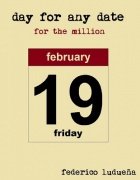 Formulas exist to calculate what day of the week a certain date falls on. If you are good at mental math, learn one, and you're set. (There was an old judge whom I tried cases before, who believed that he had invented the formula. Anytime during a hearing when someone gave a date, he would immediately interrupt the proceedings with the day of the week--"I direct your attention to August 25, 2017." "That was a THURSDAY!" It was pretty impressive, yet annoying in context. LOL) Fortunately, if you don't want to tax your brain, this little monograph gives you a method where you don't have to do a lot of memory work. Oh, there's some--you'll have to remember a little--but you mostly rely on a crib. It's an excellent method, and you also get a simple, yet devious, way to hide your crib from the audience, as well as a little history and more complicated ways to do this stunt that don't rely on a crib.
Formulas exist to calculate what day of the week a certain date falls on. If you are good at mental math, learn one, and you're set. (There was an old judge whom I tried cases before, who believed that he had invented the formula. Anytime during a hearing when someone gave a date, he would immediately interrupt the proceedings with the day of the week--"I direct your attention to August 25, 2017." "That was a THURSDAY!" It was pretty impressive, yet annoying in context. LOL) Fortunately, if you don't want to tax your brain, this little monograph gives you a method where you don't have to do a lot of memory work. Oh, there's some--you'll have to remember a little--but you mostly rely on a crib. It's an excellent method, and you also get a simple, yet devious, way to hide your crib from the audience, as well as a little history and more complicated ways to do this stunt that don't rely on a crib.
If you like the idea of doing this as an example of your superior mental abilities, then his is probably the easiest method that I've seen. I'm fairly decent at mental math, so I had the workings of the method down in about three minutes. It's that easy. For $8, how can you go wrong?
How To Escape From Any Handcuffs
Overall customer rating: ★★★★★reviewed by Christian Fisanick (confirmed purchase)
Rating: ★★★★★ (Date Added: Friday 25 August, 2017)
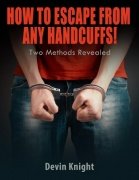 I generally love Knight's stuff, and while the effect of getting out of handcuffs is strong, this ebook is way overpriced. I could summarize his methods in three words: Get a *******. Yes, he does give a you a source for what you need, but you probably could have found that with an Internet search. Anyway, not to get technical here, but while I agree that if you are using double-locking handcuffs his way is the quickest and easiest, I just single lock them and use an even cheaper method. (Or get yourself a set of regulation thumbcuffs, and you don' t need anything. That's amazing too.)
I generally love Knight's stuff, and while the effect of getting out of handcuffs is strong, this ebook is way overpriced. I could summarize his methods in three words: Get a *******. Yes, he does give a you a source for what you need, but you probably could have found that with an Internet search. Anyway, not to get technical here, but while I agree that if you are using double-locking handcuffs his way is the quickest and easiest, I just single lock them and use an even cheaper method. (Or get yourself a set of regulation thumbcuffs, and you don' t need anything. That's amazing too.)
The Man Who Knows How to Amuse and Mystify
Overall customer rating: ★★★★★reviewed by Christian Fisanick (confirmed purchase)
Rating: ★★★★★ (Date Added: Tuesday 11 July, 2017)
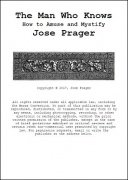 A quick look of the contents will reveal a plethora (as Dee Christopher says) of routines, forces, subtleties, peeks, imp pads, anagrams, theoretical concepts... I started reading, and just about every time I went to the next page I thought, "Wow! That's terrific. I'm adding it to my repertoire." When I got to the end, I discovered that I had a whole lot of things to add to my repertoire--and I wanted to go through the book again. This collection is clearly a labor of love from years of doing practical mentalism. And unlike a lot of propless "maybe it'll work; maybe it won't" stuff, this material is straightforward and direct. For example, Jose takes a classic psychological force and makes it virtually miss-proof using a principle that you will probably be familiar with but hadn't thought of using in this context. Later in the book he details how to reveal things effectively. Now I am a big fan of the way Luke Jermay thinks about this topic from his DVD Making Mind Reading Look Real so I wasn't expecting much new. I was wrong. The revelation stuff is great. And you get bonus effects from Dee Christopher (one of my close-up favorites of his, Falling Coins) and Peter Turner. You will spend a lot of time studying this ebook. Guaranteed.
A quick look of the contents will reveal a plethora (as Dee Christopher says) of routines, forces, subtleties, peeks, imp pads, anagrams, theoretical concepts... I started reading, and just about every time I went to the next page I thought, "Wow! That's terrific. I'm adding it to my repertoire." When I got to the end, I discovered that I had a whole lot of things to add to my repertoire--and I wanted to go through the book again. This collection is clearly a labor of love from years of doing practical mentalism. And unlike a lot of propless "maybe it'll work; maybe it won't" stuff, this material is straightforward and direct. For example, Jose takes a classic psychological force and makes it virtually miss-proof using a principle that you will probably be familiar with but hadn't thought of using in this context. Later in the book he details how to reveal things effectively. Now I am a big fan of the way Luke Jermay thinks about this topic from his DVD Making Mind Reading Look Real so I wasn't expecting much new. I was wrong. The revelation stuff is great. And you get bonus effects from Dee Christopher (one of my close-up favorites of his, Falling Coins) and Peter Turner. You will spend a lot of time studying this ebook. Guaranteed.
Don't be put off by the price tag. Prager's Magnum Opus is worth every penny. Highest recommendation here for the best mentalism book of the year so far.
The Dr's Billet Tear
Overall customer rating: ★★★★★reviewed by Christian Fisanick (confirmed purchase)
Rating: ★★★★★ (Date Added: Saturday 27 May, 2017)
 Here is another instant peak center tear technique for business cards. Whether you need another one of these in your arsenal is up to you, but this one is fairly straightforward and easy to learn. There's one caveat: The spectator has to write or draw with the card in profile rather than landscape orientation. This seems weird to me as the natural inclination is to allow someone to use the larger landscape area on the card. But if this doesn't bother you, give this a whirl. Compared to a couple of other techniques that I use--the Osterlind Perfected Center Tear and Ran Pink's Think Pink--this one is probably easier and will take less practice. But in my opinion, the UBT (Underground Bottom Tear) is still the easiest, most reliable center tear for business cards, with Think Pink being the best one for index cards, and the PCT for random scraps of thin paper.
Here is another instant peak center tear technique for business cards. Whether you need another one of these in your arsenal is up to you, but this one is fairly straightforward and easy to learn. There's one caveat: The spectator has to write or draw with the card in profile rather than landscape orientation. This seems weird to me as the natural inclination is to allow someone to use the larger landscape area on the card. But if this doesn't bother you, give this a whirl. Compared to a couple of other techniques that I use--the Osterlind Perfected Center Tear and Ran Pink's Think Pink--this one is probably easier and will take less practice. But in my opinion, the UBT (Underground Bottom Tear) is still the easiest, most reliable center tear for business cards, with Think Pink being the best one for index cards, and the PCT for random scraps of thin paper.
Ode to Ekman: A Seamless Psychological Illusion
Overall customer rating: ★★★★★reviewed by Christian Fisanick (confirmed purchase)
Rating: ★★★★★ (Date Added: Monday 08 May, 2017)
 This is a pro routine in several phases. As previously mentioned, there are no new methods, but I like the reading-body-language aspect of the performance a lot, though the last phase requiring some pre-show is not really for me. The ebook is extremely well written with performance patter, side-bar tips, and variations. It's everything you'd ever want about performing this effectively. (Other authors could use this ebook as a style model.) I realize that the price is to scare away amateurs, but on an objective basis comparing it to similar routines, this is overpriced.
This is a pro routine in several phases. As previously mentioned, there are no new methods, but I like the reading-body-language aspect of the performance a lot, though the last phase requiring some pre-show is not really for me. The ebook is extremely well written with performance patter, side-bar tips, and variations. It's everything you'd ever want about performing this effectively. (Other authors could use this ebook as a style model.) I realize that the price is to scare away amateurs, but on an objective basis comparing it to similar routines, this is overpriced.
Happy Birthday Stranger
Overall customer rating: ★★★★★reviewed by Christian Fisanick (confirmed purchase)
Rating: ★★★★★ (Date Added: Tuesday 18 April, 2017)
 You have a spectator focus on a laminated card and without having anything written down or any questions asked, you divine the spectator's Zodiac sign and date of birth. It sounds that simple--and it really is. (Not a progressive anagram in sight!) The method is diabolically clever and is a tip o' the hat to concepts from two of my favorite mentalists, the "nothing book" of Leo Boudreau and Paul Carnazzo's Dream Weaver card. When you buy Happy Birthday Stranger, you will not only get the ebook download but also two plastic cards--one for stage, the other for close-up--and a crib sheet. The cards are absolutely beautiful, very colorful and eye-catching. My only regret here is that because of the detail on the card necessary to pull off this miracle, the close-up card is bigger than wallet size. But when you see how this works, you won't mind that small trade-off.
You have a spectator focus on a laminated card and without having anything written down or any questions asked, you divine the spectator's Zodiac sign and date of birth. It sounds that simple--and it really is. (Not a progressive anagram in sight!) The method is diabolically clever and is a tip o' the hat to concepts from two of my favorite mentalists, the "nothing book" of Leo Boudreau and Paul Carnazzo's Dream Weaver card. When you buy Happy Birthday Stranger, you will not only get the ebook download but also two plastic cards--one for stage, the other for close-up--and a crib sheet. The cards are absolutely beautiful, very colorful and eye-catching. My only regret here is that because of the detail on the card necessary to pull off this miracle, the close-up card is bigger than wallet size. But when you see how this works, you won't mind that small trade-off.
The Unknown Mentalist puts out a tremendous amount of quality material, but this is one of his best items. I am almost certain that with a little thought and practice--and it won't take much of either--you'll love this too. I just wish he'd have kept it for himself, Marc Paul, Richard Osterlind, and me. Get it while it's on sale. It's exceptional. Highest recommendation.
Three Cheers for the Underrated
Overall customer rating: ★★★★★reviewed by Christian Fisanick (confirmed purchase)
Rating: ★★★★★ (Date Added: Friday 10 March, 2017)
 Three routines for $95! I understand Jermay's thinking about price: If it's high, then it will keep curious amateurs away. I like all three routines. Are they worth $95 together? Probably not. But I didn't feel burned or buyer's remorse from my purchase.
Three routines for $95! I understand Jermay's thinking about price: If it's high, then it will keep curious amateurs away. I like all three routines. Are they worth $95 together? Probably not. But I didn't feel burned or buyer's remorse from my purchase.
Taking a look at the routines, the first one, Three Questions, is my favorite because it puts three insanely clever propless mentalism gambits together so that you can name somebody's Zodiac sign in three questions, without using a progressive anagram. Actually, it's better than that. The three questions are basically just phony cover. As an added bonus to this effect, Jermay gives you a cool principle to apply to a progressive anagram for phobias. (OK, so it's an unadvertised four routines for $95.)
Next up is the Ultimate Add-a-Number. I love the classic Add-a-Number effects because they play big to crowds, and you can do them either with gimmicks or with basically nothing. (In other words, you can use a leather-bound Basil Horowitz locking pad, a gimmicked calculator, Dan Harlan's small pad of PostIt Notes, or Banachek's two 3x5 cards glued together. It's up to you.) Jermay leaves it to you to choose your favorite way of doing the add-a-number method itself, but he adds a DR element and an obscure Ed Hess principle (which reminds me of, which I'd never seen before. This one is very cool. Batting average so far: two for two.
Finally, there is Strength, a light-heavy effect, using playing cards and a card box. It, too, is good and a worker, but of the three, probably the one routine that would ordinarily be a $9.95 download at Penguin magic.
If you are a pro, you will definitely add one or more of these routines to your show if you spend the money. If you are an amateur, ask Santa to put the ebook in your stocking for Christmas.
Diagonal Peek Wallet
Overall customer rating: ★★★★★reviewed by Christian Fisanick (confirmed purchase)
Rating: ★★★★★ (Date Added: Friday 10 March, 2017)
 I have an addiction to tricked-out wallets because I am fascinated by the ingenuity that goes into the various features. (I have a drawer filled with them.) The most fundamental thing that a wallet can do is give you a peek. There are several different ways to do that, but generally you either get the peek by placing the billet into the wallet and opening it a second time (making sure that you have a good justification to do so) like the Stealth Assassin or Infinity wallets, or you glimpse it immediately after closing it, as in the many iterations of Mark Strivings SUC. For a small amount of money, you can build your own no-reopen peek wallet. The plans here cost a fiver--and you will have to look around for a particular style of wallet and one other special item--but this is a great DIY wallet, one that you can use for mentalism and carry around as your everyday wallet. (If you are familiar with Acidus Novus, then you'll immediately recognize how it works.)
I have an addiction to tricked-out wallets because I am fascinated by the ingenuity that goes into the various features. (I have a drawer filled with them.) The most fundamental thing that a wallet can do is give you a peek. There are several different ways to do that, but generally you either get the peek by placing the billet into the wallet and opening it a second time (making sure that you have a good justification to do so) like the Stealth Assassin or Infinity wallets, or you glimpse it immediately after closing it, as in the many iterations of Mark Strivings SUC. For a small amount of money, you can build your own no-reopen peek wallet. The plans here cost a fiver--and you will have to look around for a particular style of wallet and one other special item--but this is a great DIY wallet, one that you can use for mentalism and carry around as your everyday wallet. (If you are familiar with Acidus Novus, then you'll immediately recognize how it works.)
If you like easy DIY projects and want the pride of making your own cool peek wallet for about $20 total, this one's for you. For further research, Pablo Amira's Free Wallet works on a different principle--and the ebook is a bit more expensive--but you also get your own DIY peek wallet. And if you can find the long out-of-print Mind2Mind DVD by Marc Paul, he shows you how to make a peek wallet using the Diagonal Peek Wallet principle for absolutely nothing but your existing wallet and one item that you'll already have. I recommend these in addition to the cheap, but highly useful, Diagonal Peek Wallet.
Mind Index
Overall customer rating: ★★★★★reviewed by Christian Fisanick (confirmed purchase)
Rating: ★★★★★ (Date Added: Thursday 09 March, 2017)
 You might think to yourself after reading the description of Mental Index by Dr. Bill that it is overpriced by about $10--eight effects for $40. But I'm here to tell you that it's not. In addition to those eight clever routines using only index or business cards, you get a reprint of the original instructions for Acidus Novus written by Millard Longman as well as a very short video of Longman himself showing you the move. Now any mentalist should know how to do Acidus Novus because it allows for some good impromptu routines. I know and use the move, but Longman's instructions taught me a few small nuances. In addition, there is a fairly clever one-ahead Mental Epic routine as well as a one-behind one too. Overall, this is a well written little manual on a universally applicable utility technique. I liked it a lot.
You might think to yourself after reading the description of Mental Index by Dr. Bill that it is overpriced by about $10--eight effects for $40. But I'm here to tell you that it's not. In addition to those eight clever routines using only index or business cards, you get a reprint of the original instructions for Acidus Novus written by Millard Longman as well as a very short video of Longman himself showing you the move. Now any mentalist should know how to do Acidus Novus because it allows for some good impromptu routines. I know and use the move, but Longman's instructions taught me a few small nuances. In addition, there is a fairly clever one-ahead Mental Epic routine as well as a one-behind one too. Overall, this is a well written little manual on a universally applicable utility technique. I liked it a lot.
Word Sight
Overall customer rating: ★★★★★reviewed by Christian Fisanick (confirmed purchase)
Rating: ★★★★★ (Date Added: Wednesday 01 March, 2017)
 Devin has another winner here with a dictionary book test. Once I saw how it worked, I slapped my head, and said, "Of course. Leo Boudreau would just chuckle and get a big kick out of this." (Bourdreau is one of my idols. His legendary stuff is so original and baffling that it looks exactly like real mindreading. No shit...ake mushrooms!") Anyway, while it is technically a restricted range book test--you'll be able to divine two out of a couple of hundred different words--it's totally baffling. You simply have one or two spectators choose a couple of words off of a "word enrichment" list, look them up in the dictionary, and concentrate on them. The spectators say absolutely nothing. You then can immediately tell them the two words. That's it. There is no force, no peek, no progressive anagram, no impression pad, no MOABT gimmicked book, no need to know the page number... You just need to get a dictionary and type up some word lists. in other words, while this is an Al Mann concept, it is exactly the kind of thing Boudreau has in his lybrary ebooks like Psimatrika. If you love book tests--and who doesn't?--try this one. For $18 and the price of a cheap paperback dictionary, you have a mentalism miracle in your pocket. Highest recommendation.
Devin has another winner here with a dictionary book test. Once I saw how it worked, I slapped my head, and said, "Of course. Leo Boudreau would just chuckle and get a big kick out of this." (Bourdreau is one of my idols. His legendary stuff is so original and baffling that it looks exactly like real mindreading. No shit...ake mushrooms!") Anyway, while it is technically a restricted range book test--you'll be able to divine two out of a couple of hundred different words--it's totally baffling. You simply have one or two spectators choose a couple of words off of a "word enrichment" list, look them up in the dictionary, and concentrate on them. The spectators say absolutely nothing. You then can immediately tell them the two words. That's it. There is no force, no peek, no progressive anagram, no impression pad, no MOABT gimmicked book, no need to know the page number... You just need to get a dictionary and type up some word lists. in other words, while this is an Al Mann concept, it is exactly the kind of thing Boudreau has in his lybrary ebooks like Psimatrika. If you love book tests--and who doesn't?--try this one. For $18 and the price of a cheap paperback dictionary, you have a mentalism miracle in your pocket. Highest recommendation.
Far Sight
Overall customer rating: ★★★★★reviewed by Christian Fisanick (confirmed purchase)
Rating: ★★★★★ (Date Added: Wednesday 01 March, 2017)
 Don't get me wrong. This is an ingenious method to suss out a card from 15 to 20 feet away. (Devin claims that his outer limit is 30 feet. Wow!) That's amazing. If you pay close attention to the working of the trick--and I'm not going to give you that and spoil it--you'll figure out how it's done. And for $5, this is a real corker of an effect. (You can go down the hall and predict what card the spectator has selected. Just awesome!) The downside is that you are going to have to spend some money to make this one work. If you don't have everything that you need lying around--and I didn't--be prepared to spend up to $40-$50. But once you've done that, you are set for life with this showstopper. Two other points aren't necessarily negatives, but you should be aware of them: (1) this really can be the only mentalism-with-cards routine in your show; and (2) you need some audience management--the spectator has to follow your directions exactly--because the cards cannot be inspected. If you are still interested, your fiver plus will be well spent. Recommended.
Don't get me wrong. This is an ingenious method to suss out a card from 15 to 20 feet away. (Devin claims that his outer limit is 30 feet. Wow!) That's amazing. If you pay close attention to the working of the trick--and I'm not going to give you that and spoil it--you'll figure out how it's done. And for $5, this is a real corker of an effect. (You can go down the hall and predict what card the spectator has selected. Just awesome!) The downside is that you are going to have to spend some money to make this one work. If you don't have everything that you need lying around--and I didn't--be prepared to spend up to $40-$50. But once you've done that, you are set for life with this showstopper. Two other points aren't necessarily negatives, but you should be aware of them: (1) this really can be the only mentalism-with-cards routine in your show; and (2) you need some audience management--the spectator has to follow your directions exactly--because the cards cannot be inspected. If you are still interested, your fiver plus will be well spent. Recommended.
PYO Book Test
Overall customer rating: ★★★★★reviewed by Christian Fisanick (confirmed purchase)
Rating: ★★★★★ (Date Added: Friday 24 February, 2017)
 I love mentalism book tests. They are classic, crowd-pleasing, and just plain fun to do. I also love the many different methodologies and routines--from Marc Paul's hilariously bold AAA Book Test to Ted Karmilovich's MOABT to Rick Roth's spooky Outlaw Effects stuff. I have dozens of them. Some are relatively inexpensive (Paul Romhany's travel book, for example, is a bargain) while others like the aforementioned MOABT are quite pricey. Out of the pack comes crazy--and I mean that in a good way--Dee Christopher who gives you his book test which you can customize and print anyway you want. For cheap. Really cheap. Someone spilled coffee on your "Print Your Own" book? No sweat, replacement is about $5. Want to do something different and add Larry Becker's Flashback feature to the book? It's easy to edit the file and do so. Don't like the cover options? Make one of your own. The possibilities are unlimited--and you have an endless supply of replacement books.
I love mentalism book tests. They are classic, crowd-pleasing, and just plain fun to do. I also love the many different methodologies and routines--from Marc Paul's hilariously bold AAA Book Test to Ted Karmilovich's MOABT to Rick Roth's spooky Outlaw Effects stuff. I have dozens of them. Some are relatively inexpensive (Paul Romhany's travel book, for example, is a bargain) while others like the aforementioned MOABT are quite pricey. Out of the pack comes crazy--and I mean that in a good way--Dee Christopher who gives you his book test which you can customize and print anyway you want. For cheap. Really cheap. Someone spilled coffee on your "Print Your Own" book? No sweat, replacement is about $5. Want to do something different and add Larry Becker's Flashback feature to the book? It's easy to edit the file and do so. Don't like the cover options? Make one of your own. The possibilities are unlimited--and you have an endless supply of replacement books.
As others have said, this is a bargain, a great bargain. Dee obviously spent many hours putting together the files that you need to print your own books, including giving you a choice of five different color covers. And if you follow his instructions and zip on over to lulu.com, you can put together a book and have it in the mail to yourself in no time for a pittance. (I live in a far flung place off the grid. The U.S. postage for shipping cost more than printing the book, but the total was still about $7.) With a little more work, you don't even have to get it printed you can make an ebook. You can't beat that deal.
Oh, I almost forgot to mention, the book test itself is pretty awesome. It's not just about divining the first or last word on a page. By just knowing the page number, you can tell your spectators pretty much what is on the page in a lot of detail. (Dee candidly admits that he took a "page" from Outlaw Effects stunningly brilliant methodologies.)
So to sum up, here's a DIY book test that is fast, cheap, and terrific. What else do you need to be convinced? Highest recommendation.
Crisis
Overall customer rating: ★★★★★reviewed by Christian Fisanick (confirmed purchase)
Rating: ★★★★★ (Date Added: Tuesday 14 February, 2017)
 Crisis is a set of four routines using currency, Post-it notes, and a Sharpie. That's it. Minimalism at its best. Let's get right to the point, as the author candidly admits, that there's really nothing new here. And there isn't.
Crisis is a set of four routines using currency, Post-it notes, and a Sharpie. That's it. Minimalism at its best. Let's get right to the point, as the author candidly admits, that there's really nothing new here. And there isn't.
Game is a prediction of what the result of three rounds of "which hand" will be. Lots of people do this--and Marc Paul taught it on his classic, but now out-of-print, Mind2Mind DVD. Bothra does make fairly cool use of two Post-it notes for his MOs prediction. The technique, though, reminded me a lot of Gerard Zitta's somewhat similar "Janus."
Location is another effect done by a lot of mentalists. It kind of resembles the commercial effect Espionage in predicting the location of objects using a variation of the Free Will Principle by Deddy Corbuzier,,
O Dear is a Post-it note version of Dead or Alive. I've seen a similar routine on a Dan Harlan video, as well as in Julian Moore's epic masterpiece on all the things you can do with Post-it notes, Post-Justify.
4 Thoughts is a straight OA Mental Epic with four folded slips of paper. The only thing that I hadn't seen before was the force that he suggests for the fourth choice. It's different, but it's not necessarily better than what folks usually use.
Overall, this is not a bad little ebook. I do variations of all four of these routines because they are classics and pretty effective. Richard Osterlind's working of the OA principle used in 4 Thoughts is much superior, and the only way that I do that routine. The book comes with a short, somewhat error-ridden, but overall helpful MP4 file.
Emoticon: An Emotional Design Duplication
Overall customer rating: ★★★★★reviewed by Christian Fisanick (confirmed purchase)
Rating: ★★★★★ (Date Added: Wednesday 14 December, 2016)
![]() First, let's get this out of the way: Emoticon uses an old, old method. TC says that it is from Annemann, and without pulling out my copies of Practical Mental Magic or The Jinx to check, I don't doubt that. The method also forms the basis of Richard Osterlind's ODD, Osterlind's Design Duplication System. And essentially this same method is used in Feel by Peter Nardi and Marc Spelmann on their Unpexpected DVD set. Not to mention, you could do a design dupe like this using Anton James's Mentalism Symbol Pack. So if you are familiar with any one of these, you'll know immediately how Emoticon works. Now here's what's different: TC has adapted the routine for two spectator duplications. He also shows you how to use a clever crib in plain sight. (There's no doubt that you can get away with this. If you don't like the idea, you can always use memorization or a more discrete crib like the one Mark Elsdon demonstrated in his first Penguin Live lecture, where you fiddle with the greyscale settings of the font in Microsoft Word.) But most significantly--and definitely pretty darned cool--is that TC uses emoticons for the design items, and the pdf gives them to you in two different sizes for ease of duplication in manufacturing your own cards. This is a great idea since just about everyone today who has a cell phone is familiar with them. And since they represent facial emotions, what better way to lead into a cold reading.
First, let's get this out of the way: Emoticon uses an old, old method. TC says that it is from Annemann, and without pulling out my copies of Practical Mental Magic or The Jinx to check, I don't doubt that. The method also forms the basis of Richard Osterlind's ODD, Osterlind's Design Duplication System. And essentially this same method is used in Feel by Peter Nardi and Marc Spelmann on their Unpexpected DVD set. Not to mention, you could do a design dupe like this using Anton James's Mentalism Symbol Pack. So if you are familiar with any one of these, you'll know immediately how Emoticon works. Now here's what's different: TC has adapted the routine for two spectator duplications. He also shows you how to use a clever crib in plain sight. (There's no doubt that you can get away with this. If you don't like the idea, you can always use memorization or a more discrete crib like the one Mark Elsdon demonstrated in his first Penguin Live lecture, where you fiddle with the greyscale settings of the font in Microsoft Word.) But most significantly--and definitely pretty darned cool--is that TC uses emoticons for the design items, and the pdf gives them to you in two different sizes for ease of duplication in manufacturing your own cards. This is a great idea since just about everyone today who has a cell phone is familiar with them. And since they represent facial emotions, what better way to lead into a cold reading.
So while the method is nothing new, for your ten spot, you get reproducible cards; a crib idea; and a neat, new routine. I'd say that Emoticon is well worth the download even if you are already doing a similar routine.
The Guide
Overall customer rating: ★★★★★reviewed by Christian Fisanick (confirmed purchase)
Rating: ★★★★★ (Date Added: Monday 05 December, 2016)
 The Guide contains an extremely intriguing principle to determine which of a binary choice a spectator has made. (It doesn't use MOs or a force either, which is what I had originally suspected.) Apparently, this is something that Zitta came up with years ago that he originally named "Janus," after the two-faced Roman god. I like that this short ebook gives a lot potential uses of the principle under different scenarios using a variety of objects such as business cards, pens, cigarettes, coins, straws, etc. and even includes color photos illustrating the method. While some of the possible routines seem contrived and artificial, there is one with the spectator's picking up a lighter to imagine lighting his way in the dark and turning left or right that I am definitely going to try. It seems well motivated and organic.
The Guide contains an extremely intriguing principle to determine which of a binary choice a spectator has made. (It doesn't use MOs or a force either, which is what I had originally suspected.) Apparently, this is something that Zitta came up with years ago that he originally named "Janus," after the two-faced Roman god. I like that this short ebook gives a lot potential uses of the principle under different scenarios using a variety of objects such as business cards, pens, cigarettes, coins, straws, etc. and even includes color photos illustrating the method. While some of the possible routines seem contrived and artificial, there is one with the spectator's picking up a lighter to imagine lighting his way in the dark and turning left or right that I am definitely going to try. It seems well motivated and organic.
There is a lot of food for thought here so if you like this almost-propless concept, you should give this a go.
The Elimination Principle
Overall customer rating: ★★★★★reviewed by Christian Fisanick (confirmed purchase)
Rating: ★★★★★ (Date Added: Saturday 03 December, 2016)
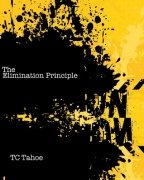 Ah, TC Tahoe, the working magician's magician. He has some of the best, most practical, and usable stuff around, and once again, he hits a homer for the low price of a ten spot. The Elimination Principle is TC's way of doing a completely ungimmicked version of Bank Night. Now contrary to some, I like Bank Night and can execute it nicely about a half-dozen different ways. TC's version uses a simplification of a ruse developed by Max Maven. When I saw how he used it, I thought, "Absolutely. It will work in a half-dozen different settings. Why didn't I think of it?" Anyway, the ungimmicked version of Bank Night is 100% examinable. One move--and it's easy and not dodgy at all--and you end absolutely clean. If that weren't enough, TC gives you a bunch of those different settings. They are all wonderful ideas.
Ah, TC Tahoe, the working magician's magician. He has some of the best, most practical, and usable stuff around, and once again, he hits a homer for the low price of a ten spot. The Elimination Principle is TC's way of doing a completely ungimmicked version of Bank Night. Now contrary to some, I like Bank Night and can execute it nicely about a half-dozen different ways. TC's version uses a simplification of a ruse developed by Max Maven. When I saw how he used it, I thought, "Absolutely. It will work in a half-dozen different settings. Why didn't I think of it?" Anyway, the ungimmicked version of Bank Night is 100% examinable. One move--and it's easy and not dodgy at all--and you end absolutely clean. If that weren't enough, TC gives you a bunch of those different settings. They are all wonderful ideas.
Alakazam has been selling out of late on Steve Cook's brand new Volition, a commercial version of an ungimmicked Bank Night. Folks are going nuts over it, and I have to admit, it's either the slickest or stupidest thing that I've ever seen. Maybe both simultaneously. But now that I've seen TC's Elimination Principle, I'm not sure you need to buy the much more expensive Volition, which, while clever, uses a knacky procedure. Summary: TC keeps his batting average high. Highly recommended.
Chair'z
Overall customer rating: ★★★★★reviewed by Christian Fisanick (confirmed purchase)
Rating: ★★★★★ (Date Added: Saturday 03 December, 2016)
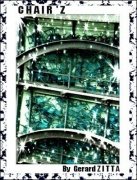 This is a nice and easy three-person chair test, based on an idea by Max Maven. I really like it and am going to expand on the concept to add another climax similar to what folks like Marc Spelmann do--put another correct prediction under/on the back of each chair. Gerry's ideas are always straightforward and excellent, and this is no exception. And this effect lends itself both to stage and more intimate settings. You could do it with folks sitting on bar stools.
This is a nice and easy three-person chair test, based on an idea by Max Maven. I really like it and am going to expand on the concept to add another climax similar to what folks like Marc Spelmann do--put another correct prediction under/on the back of each chair. Gerry's ideas are always straightforward and excellent, and this is no exception. And this effect lends itself both to stage and more intimate settings. You could do it with folks sitting on bar stools.
But there's more. Even if you choose not to use the chair test, there are a few wonderful ideas on MOs here, including one using paper folded into the shape of an H that I had never seen before. For a little more than the price of a Quarter Pounder with Cheese combo meal at McDonald's, you get a terrific routine and some great mentalism utility ideas. Get this. Highly recommended.
First Date Revelation
Overall customer rating: ★★★★★reviewed by Christian Fisanick (confirmed purchase)
Rating: ★★★★★ (Date Added: Monday 28 November, 2016)
 Here's another clever routine from Devin Knight. He gives you two different methods. The first is Al Mann's Kolophon Principle, so if you have that ebook, you'll know exactly how it works. The second similar method is better, I think, and one that I'd never seen before. It's pretty ingenious when you get right down to it. The full revelation, which involves folding the six slips with the names on them, is, in my opinion, too much hands on activity for the mentalist. There are much better ways to accomplish the same thing with the spectator's doing the work of folding the billets and mixing them before you find the "first date" billet. In any event, this is well worth the $10.
Here's another clever routine from Devin Knight. He gives you two different methods. The first is Al Mann's Kolophon Principle, so if you have that ebook, you'll know exactly how it works. The second similar method is better, I think, and one that I'd never seen before. It's pretty ingenious when you get right down to it. The full revelation, which involves folding the six slips with the names on them, is, in my opinion, too much hands on activity for the mentalist. There are much better ways to accomplish the same thing with the spectator's doing the work of folding the billets and mixing them before you find the "first date" billet. In any event, this is well worth the $10.
Worlds Within Words
Overall customer rating: ★★★★★reviewed by Christian Fisanick (confirmed purchase)
Rating: ★★★★★ (Date Added: Monday 28 November, 2016)
 The UM is back with another progressive anagram utility. This one can best be described as a simplification or limiting procedure. It can save a lot of steps when doing a complicated anagram, such as one with names of super heroes. As usual, he's come up with a smart piece to use in presentation. He should collect his writings on anagrams in a book.
The UM is back with another progressive anagram utility. This one can best be described as a simplification or limiting procedure. It can save a lot of steps when doing a complicated anagram, such as one with names of super heroes. As usual, he's come up with a smart piece to use in presentation. He should collect his writings on anagrams in a book.
Understanding and Using Gilbreath Principle
Overall customer rating: ★★★★★reviewed by Christian Fisanick (confirmed purchase)
Rating: ★★★★★ (Date Added: Friday 18 November, 2016)
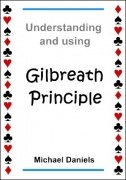 So you don't know what the Gilbreath Principle (or Gilbreath Permutation) is, and Perci Diakonis and Ron Graham's incredibly detailed book Mathematical Magic scares the hell out of you because you weren't good at math in school. Never fear. For the price of a coffee (or cheap domestic beer) and I would say about half an hour of your time, you will be blown away. It boils down to this: There are mathematical oddities in the world that seem completely impossible (Benford's Law concerning the relative frequencies of the first digit in data sets comes to mind. It applies to election votes, lengths of rivers, street addresses, and all kinds of crazy things.) Anyway, the Gilbreath Principle basically says that randomly mixing (in a certain way) two ordered data sets will give you a different data set, but that data set will also be ordered. In other words, mix two halves of a deck that alternates red and black suits, and you'll get a deck that has groups that... Well, you are just going have to read this ebook. Author Daniel does a super job of making you understand this without any math notation. Follow along, and you will be convinced. And then he gives you two killer routines. Did I mention that this is $4? Cardicians and mentalists will find a lot to love here if you've never used this principle before. This is one of these principles that apart from mathematicians and magicians, very few people know because it's counterintuitive: Randomly mixing a nicely ordered deck will give you a randomly ordered deck, right? Nope. Laypeople will have no idea how you predict/know things about a fairly riffle shuffled deck. It seems impossible. But it isn't. It's easy to work miracles once you know this, one of the greatest weird math principles of all time. And there are no formulas, difficult counting, or memory work involved. Highly recommended.
So you don't know what the Gilbreath Principle (or Gilbreath Permutation) is, and Perci Diakonis and Ron Graham's incredibly detailed book Mathematical Magic scares the hell out of you because you weren't good at math in school. Never fear. For the price of a coffee (or cheap domestic beer) and I would say about half an hour of your time, you will be blown away. It boils down to this: There are mathematical oddities in the world that seem completely impossible (Benford's Law concerning the relative frequencies of the first digit in data sets comes to mind. It applies to election votes, lengths of rivers, street addresses, and all kinds of crazy things.) Anyway, the Gilbreath Principle basically says that randomly mixing (in a certain way) two ordered data sets will give you a different data set, but that data set will also be ordered. In other words, mix two halves of a deck that alternates red and black suits, and you'll get a deck that has groups that... Well, you are just going have to read this ebook. Author Daniel does a super job of making you understand this without any math notation. Follow along, and you will be convinced. And then he gives you two killer routines. Did I mention that this is $4? Cardicians and mentalists will find a lot to love here if you've never used this principle before. This is one of these principles that apart from mathematicians and magicians, very few people know because it's counterintuitive: Randomly mixing a nicely ordered deck will give you a randomly ordered deck, right? Nope. Laypeople will have no idea how you predict/know things about a fairly riffle shuffled deck. It seems impossible. But it isn't. It's easy to work miracles once you know this, one of the greatest weird math principles of all time. And there are no formulas, difficult counting, or memory work involved. Highly recommended.
Mental Epic Compendium
Overall customer rating: ★★★★★reviewed by Christian Fisanick (confirmed purchase)
Rating: ★★★★★ (Date Added: Tuesday 15 November, 2016)
 Mental Epic Compendium contains almost 400 pages of routines, variations, and subtleties on the classic routine Mental Epic. If you do Mental Epic or any one-ahead routine and don't have this compendium, shame on you. While I know that the term "masterpiece" is overused, this ebook really is one. Just look at the list of contributors: Banachek, Cassidy, Knepper, Dyne, Cushman, Shaxon, Tahoe... the best of the best. Need I say more? And while it may not be the completely definitive encyclopedia on Mental Epic--Richard Osterlind has a killer close-up routine with two small pads of paper that he has demonstrated on a couple of his DVDs, and Neil Tobin shows you on his Xpert DVD how to do one using his Xpert utility, for example--this is about as much material as you are ever likely to see. Paul Ramhany, a New Zealander who never disappoints in his creations, gets my highest respect for the brilliant job of compiling this material--and his routines are great too. (Cue the enthusiastic standing-on-my-chair applause.) I can guarantee that you will (1) learn some new things; (2) use at least one of these routines; and (3) have food for thought in devising your own effects. Brilliant. I can't get enough of this stuff. (And don't be a cheapskate and say, "But it's $45." It's hundreds of pages of stuff. A couple of the concepts alone would be worth that price.) Highest recommendation.
Mental Epic Compendium contains almost 400 pages of routines, variations, and subtleties on the classic routine Mental Epic. If you do Mental Epic or any one-ahead routine and don't have this compendium, shame on you. While I know that the term "masterpiece" is overused, this ebook really is one. Just look at the list of contributors: Banachek, Cassidy, Knepper, Dyne, Cushman, Shaxon, Tahoe... the best of the best. Need I say more? And while it may not be the completely definitive encyclopedia on Mental Epic--Richard Osterlind has a killer close-up routine with two small pads of paper that he has demonstrated on a couple of his DVDs, and Neil Tobin shows you on his Xpert DVD how to do one using his Xpert utility, for example--this is about as much material as you are ever likely to see. Paul Ramhany, a New Zealander who never disappoints in his creations, gets my highest respect for the brilliant job of compiling this material--and his routines are great too. (Cue the enthusiastic standing-on-my-chair applause.) I can guarantee that you will (1) learn some new things; (2) use at least one of these routines; and (3) have food for thought in devising your own effects. Brilliant. I can't get enough of this stuff. (And don't be a cheapskate and say, "But it's $45." It's hundreds of pages of stuff. A couple of the concepts alone would be worth that price.) Highest recommendation.
Psychic Money Sense
Overall customer rating: ★★★★★reviewed by Christian Fisanick (confirmed purchase)
Rating: ★★★★★ (Date Added: Monday 07 November, 2016)
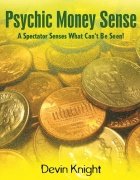 This is a quickie trick that's kind of a throwaway, so much so that even Knight suggests it as a prelude to one of his Blind Sight effects. It's about as self-working as they come, and you really only need to remember one thing. It reminds me of something that would be one of eight or nine tricks in a Conversation as Mentalism volume by Mark Elsdon. In other words, you might do this in a bar or as "B" filler material for close-up. There are only two ways this trick can end: Two out of three times, you'll get a certain outcome and the third time a different one. (It will be strikingly obvious how this plays out once you read the instructions.) The principle involved is actually better than the trick, I think. So if you want to spend your Starbuck's money today on a little mentalism, you could do worse.
This is a quickie trick that's kind of a throwaway, so much so that even Knight suggests it as a prelude to one of his Blind Sight effects. It's about as self-working as they come, and you really only need to remember one thing. It reminds me of something that would be one of eight or nine tricks in a Conversation as Mentalism volume by Mark Elsdon. In other words, you might do this in a bar or as "B" filler material for close-up. There are only two ways this trick can end: Two out of three times, you'll get a certain outcome and the third time a different one. (It will be strikingly obvious how this plays out once you read the instructions.) The principle involved is actually better than the trick, I think. So if you want to spend your Starbuck's money today on a little mentalism, you could do worse.
Foam Kangaroo Abs
Overall customer rating: ★★★★★reviewed by Christian Fisanick (confirmed purchase)
Rating: ★★★★★ (Date Added: Friday 21 October, 2016)
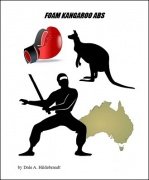 The weirdly titled Foam Kangaroo Abs is an ebook mostly devoted to progressive and branching anagrams. It has tons of material from discerning one of the 12 apostles, a pop song, a food from a grocery list, and part of a stick man to the classic spectator's sign of the Zodiac. If you like PAs/BAs, then this book will be incredibly useful. If you don't have any experience with them, I'd suggest The Prodigal by Atlas Brookings first to get attuned to performance details. The way Brookings performs PAs/BAs is outstanding; he makes it look like real mind reading. The trouble is, of all the areas of mentalism, this is one of the most difficult routines to pull off. Badly done, a PA/BA looks like a half-baked guessing game or a poor man's Wheel of Fortune. This stuff takes a lot of memory work and practice to do smoothly and effectively.
The weirdly titled Foam Kangaroo Abs is an ebook mostly devoted to progressive and branching anagrams. It has tons of material from discerning one of the 12 apostles, a pop song, a food from a grocery list, and part of a stick man to the classic spectator's sign of the Zodiac. If you like PAs/BAs, then this book will be incredibly useful. If you don't have any experience with them, I'd suggest The Prodigal by Atlas Brookings first to get attuned to performance details. The way Brookings performs PAs/BAs is outstanding; he makes it look like real mind reading. The trouble is, of all the areas of mentalism, this is one of the most difficult routines to pull off. Badly done, a PA/BA looks like a half-baked guessing game or a poor man's Wheel of Fortune. This stuff takes a lot of memory work and practice to do smoothly and effectively.
In addition to the PA/BA routines, there are some bonus effects, as listed in the ebook description, such as a multi-stage Rock-Paper-Scissors routine and yet another nearly half-dozen approaches to Max Maven's classic Positive/Negative. For me, these things were like finding extra presents under the Christmas tree. Nice indeed.
Pricey ebook? Yes. Worth it? Very much so. While I don't think this is for everyone, and you certainly won't perform everything here (that would be sheer memory madness), my mind was boggled just skimming through it. There is some really creative food for thought in Foam Kangaroo Abs, and I recommend it. I know that I am going to spend a lot of time studying it in the near future.